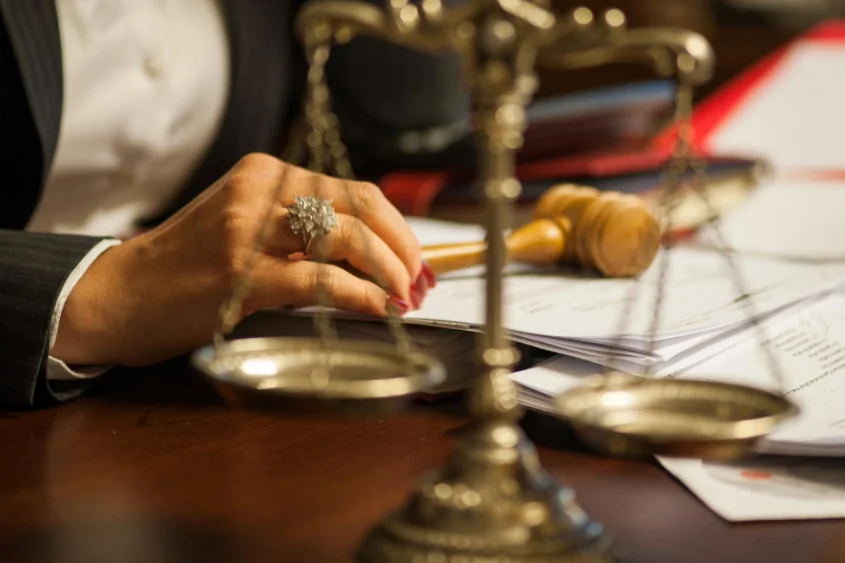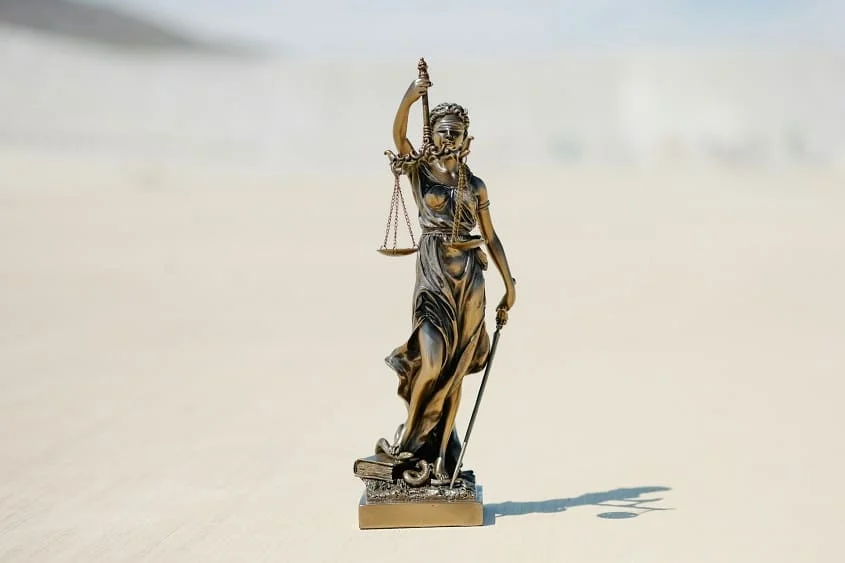Patent Contributory Infringement
- November 6, 2023
- By Sarita Thomas
- Read 9 minutes
What Is Patent Contributory Infringement?
Patent contributory infringement refers to the act of knowingly inducing, aiding, or encouraging another person to infringe on a patent. It involves providing the means or instructions for others to carry out infringing activities. Contributory infringement can occur when a party provides a component or part that is specially designed for use in an infringing manner. This can include supplying materials, tools, or software that enable the creation or use of a patented invention without permission. In some cases, even the knowledge of the infringing use can be enough to establish liability for contributory infringement. It is important for individuals and businesses to understand the concept of patent contributory infringement to avoid legal consequences and ensure respect for intellectual property rights.
Below is a table summarizing the key points:
| Aspect | Description |
|---|---|
| Definition | Act of knowingly inducing, aiding, or encouraging another person to infringe on a patent |
| Means or Instructions | Providing the means or instructions for others to carry out infringing activities |
| Specially Designed Components | Supplying components or parts that are specially designed for use in an infringing manner |
| Knowledge | Even the knowledge of the infringing use can establish liability for contributory infringement |
In conclusion, patent contributory infringement involves actively participating in or facilitating the infringement of a patent. It is a serious offense that can lead to legal consequences and damages. Individuals and businesses should be aware of their responsibilities and obligations regarding intellectual property rights to avoid engaging in contributory infringement.
Elements of patent contributory infringement
Contributory infringement is a legal doctrine that holds individuals or entities liable for actively aiding, facilitating, or encouraging another party’s infringement of a patent. To establish contributory infringement, several elements must be proven:
- Direct infringement: There must be evidence of direct infringement by a third party. This means that someone is actively using, making, selling, or offering to sell a patented invention without authorization.
- Knowledge: The accused infringer must have knowledge of the patent and the infringing activity. This can be actual knowledge or willful blindness, where the infringer deliberately avoids learning about the patent or infringing activity.
- Material contribution: The accused infringer must materially contribute to the infringement. This can include providing components, parts, or services that are essential to the infringing activity.
- Intent: The accused infringer must have the intent to induce or encourage the third party’s infringement.
Contributory infringement can be a complex legal concept, and the specific requirements may vary depending on the jurisdiction and the circumstances of the case.
Examples of patent contributory infringement
Patent contributory infringement occurs when a party knowingly sells, offers to sell, or imports a component or material that is specially made or adapted for use in a patented invention, and is not a staple article or commodity of commerce suitable for substantial noninfringing use. Contributory infringement can be illustrated through various examples:
- Selling infringing components: If a company sells components that are specifically designed to be used in an infringing product, they may be liable for contributory infringement.
- Importing infringing materials: Importing materials that are specifically made for use in a patented invention, and are not suitable for noninfringing use, can also constitute contributory infringement.
- Knowingly aiding infringement: If a party knowingly aids or encourages another party to infringe on a patent, they can be held liable for contributory infringement.
These examples highlight the importance of understanding the implications of patent contributory infringement and the potential legal consequences.
Legal Requirements for Patent Contributory Infringement
Existence of a valid patent
A valid patent is an essential requirement for a claim of patent contributory infringement. Before accusing someone of contributory infringement, it is necessary to establish that a valid patent exists for the invention in question. A patent is considered valid if it meets all the legal requirements set forth by the patent laws of the country. These requirements typically include novelty, non-obviousness, and utility. Once a patent is granted, the patent owner has the exclusive right to prevent others from making, using, or selling the patented invention without permission. In the case of contributory infringement, the patent owner can also hold liable those who knowingly contribute to the infringement by providing components or services that are essential to the infringing activity. Therefore, the existence of a valid patent is crucial in determining whether a claim of patent contributory infringement can be pursued.
Knowledge of the patent
In order to establish contributory infringement, the accused infringer must have knowledge of the patent and its claims. Knowledge can be proven if the accused infringer had actual knowledge of the patent or if they had constructive knowledge. Constructive knowledge can be established if the patent was widely known or if the accused infringer had a duty to know about the patent. For example, if the patent was published in a widely circulated industry journal or if the accused infringer had a professional duty to stay informed about patents in their field. In some cases, the accused infringer may also be found to have knowledge of the patent if they were willfully blind to its existence. This means that they deliberately avoided learning about the patent in order to avoid liability for infringement.
Inducement or contribution to infringement
In patent law, inducement or contribution to infringement refers to the act of encouraging or assisting another party to infringe a patent. This can occur when a person or entity actively promotes or facilitates the use of a patented invention by others, knowing that such use would infringe the patent rights. Inducement or contribution to infringement is often considered a form of secondary liability, as the party involved may not directly engage in the infringing acts themselves, but rather enables or encourages others to do so. In some jurisdictions, inducement or contribution to infringement may be subject to legal remedies, including damages and injunctions. It is important for patent holders to be aware of potential inducement or contribution to infringement, as it can have significant implications for the enforcement of their patent rights.
Case Law on Patent Contributory Infringement
Sony Corp. of America v. Universal City Studios, Inc.
In the landmark case of Sony Corp. of America v. Universal City Studios, Inc., the United States Supreme Court addressed the issue of patent contributory infringement. The case involved Sony’s manufacture and sale of the Betamax, a video cassette recorder (VCR) that allowed users to record television programs for later viewing. Universal City Studios, the copyright owner of various television shows and movies, argued that the sale of the Betamax constituted contributory infringement because it facilitated copyright infringement by users. However, the Supreme Court ruled in favor of Sony, holding that the sale of the Betamax did not constitute contributory infringement as long as the device had substantial non-infringing uses. This decision established an important precedent for the liability of technology manufacturers in cases of contributory infringement.
Microsoft Corp. v. AT&T Corp.
In the landmark case of Microsoft Corp. v. AT&T Corp., the issue of patent contributory infringement was brought to the forefront. The case revolved around the question of whether Microsoft’s distribution of its Windows operating system to computer manufacturers constituted contributory infringement of AT&T’s patent on speech compression technology. AT&T argued that by providing the software necessary to use the patented technology, Microsoft was contributing to the infringement of its patent. However, the Supreme Court ruled in favor of Microsoft, stating that the distribution of software alone does not constitute contributory infringement unless the software itself is capable of directly infringing the patent. This decision set an important precedent in the field of patent law, clarifying the requirements for proving contributory infringement and providing guidance for future cases.
Limelight Networks, Inc. v. Akamai Technologies, Inc.
In the case of Limelight Networks, Inc. v. Akamai Technologies, Inc., the issue of patent contributory infringement was brought to the forefront. Patent contributory infringement occurs when someone actively induces another party to infringe on a patent. In this case, Limelight Networks was accused of inducing its customers to perform some of the steps of a patented method. However, the Supreme Court ruled in favor of Limelight Networks, stating that there can be no liability for inducement of infringement under 35 U.S.C. § 271(b) if there is no underlying direct infringement by a single party. This ruling clarified the requirements for establishing patent contributory infringement and set an important precedent in patent law.
Defenses against Patent Contributory Infringement
Lack of knowledge
In cases of patent contributory infringement, lack of knowledge of the patent is not a defense. Even if the alleged infringer did not know about the patent, they can still be held liable for contributory infringement if they had knowledge of the infringing activity and induced or encouraged others to infringe the patent. This strict liability approach ensures that patent holders are protected and that individuals cannot escape liability by claiming ignorance of the patent. However, it is important to note that the knowledge requirement for contributory infringement is different from direct infringement, where knowledge of the patent is often necessary to establish liability.
No inducement or contribution
In patent law, contributory infringement is a form of indirect infringement where a party is held liable for actively aiding, encouraging, or inducing another party to infringe a patent. However, there is a distinction between contributory infringement and induced infringement. While induced infringement requires the accused infringer to have knowledge of the patent and actively induce others to infringe, contributory infringement only requires the accused infringer to have knowledge that their actions will contribute to the infringement. In other words, contributory infringement focuses on the defendant’s contribution to the infringing activity, while induced infringement focuses on the defendant’s intent to induce others to infringe. To establish contributory infringement, the patent holder must prove that the accused infringer had knowledge of the patent and that their actions are not merely incidental or tangential to the infringement. This can be demonstrated by showing that the accused infringer supplied a component or material that is a material part of the invention and that has no substantial non-infringing use. Additionally, the patent holder must show that the accused infringer had knowledge that their component or material would be used in an infringing manner. If these elements are proven, the accused infringer may be held liable for contributory infringement.
Invalidity of the patent
In the context of patent law, the term contributory infringement refers to the act of knowingly providing a component or part of a patented invention to another party who intends to use it in an infringing manner. However, it is important to note that a patent can be deemed invalid for various reasons.
Check out our strategic approach to patent invalidation.
One common ground for invalidity is the lack of novelty, meaning that the invention was already known or used by others before the filing date of the patent. Another ground for invalidity is the lack of inventive step, which means that the invention would have been obvious to a person skilled in the relevant field. Moreover, a patent can be invalidated if it fails to meet the requirements of enablement and written description, which ensure that the patent specification provides enough information for a person skilled in the field to practice the invention. Therefore, before accusing someone of contributory infringement, it is crucial to assess the validity of the patent in question.
Navigating the complexities of patent law can be daunting, especially when it comes to the intricacies of contributory infringement. As litigation patent attorneys, the depth of your understanding in these matters is not just about legal compliance—it’s about leveraging every facet of the law to protect innovation and serve justice. Our specialized prior art searches in infringement analysis, Freedom to Operate (FTO) assessments, and invalidation searches (prior art) are tailored to strengthen your legal strategy and support your clients effectively and at the same time benfiting from low cost LPO (legal process outsourcing). With a proven track record in bolstering IP portfolios and litigation outcomes, we invite you to explore our services and discover how our expertise can augment your practice. Visit our service pages for infringement, FTO, and invalidation to ensure your case management is not only proficient but also prescient and cost efficient within stringent timelines.
Sarita Thomas
Latest Blogs
Blog Categories
- Intellectual Property (IP) Strategy (84)
- Intellectual Property Asset Management (IPAM) (17)
- IP Monetization (4)
- IP News (7)
- Patent Drafting (2)
- Patent Litigation (6)
- Patent Prosecution (8)
- Patenting (18)









No comment yet, add your voice below!